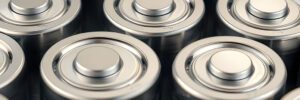
Moleaer has announced a patent-pending method that integrates nanobubbles into the fabrication of thin films used in lithium-ion batteries, proton exchange membrane (PEM) fuel cells, and electrolyzers. According to Moleaer, this chemical-free, non-invasive process increases the porosity and uniformity of thin films, directly impacting the efficiency, durability, and power output of devices critical to electric vehicles and clean energy systems.
The process works by introducing billions of nanobubbles into liquid coatings during thin-film manufacturing. Moleaer claims this approach stabilizes inks, improves dispersion, and optimizes pore size distribution, resulting in films with consistent porosity and finer particle sizes. For PEM fuel cell cathode catalyst layers—relevant to electric vehicle powertrains and portable systems—the technique reportedly enables up to 20 percent more power output from the same active area, supporting reduced component size and cost per watt.
Moleaer says performance gains extend to other applications: PEM electrolyzer anode catalyst layers for green hydrogen production demonstrated a 17 percent improvement in current density at operational voltages, while lithium-ion nickel-manganese-cobalt (NMC) cathodes showed improved capacity retention and high-rate performance. The technology also delivered a 66 percent increase in permeability for ultrafiltration membranes, which could reduce energy consumption in water treatment.
“Thin films are foundational to clean energy and water technologies, yet traditional manufacturing methods limit how much performance we can unlock from them,” said Nick Dyner, CEO of Moleaer. “Our nanobubble-enabled process addresses those limitations, without changing formulas or processes, delivering gains in power, efficiency, and sustainability.”
Moleaer reports that the process has been independently validated and peer-reviewed, confirming reliable integration of nanobubbles into production lines and improved nanoscale material organization. “Nanobubbles act like invisible scaffolding,” said Dr. Mohamed Abdelrahman, Senior R&D Application Engineer at Moleaer. “They improve how materials self-organize during fabrication, leading to higher-performing films with less waste and fewer defects.”
Moleaer is seeking to commercialize this technology with partners across membrane and energy device manufacturing sectors. The process is compatible with existing coating techniques, which the company says will allow for straightforward adoption.
Source: Moleaer
from Charged EVs https://ift.tt/RNnjpgL



No comments:
Post a Comment